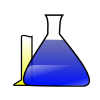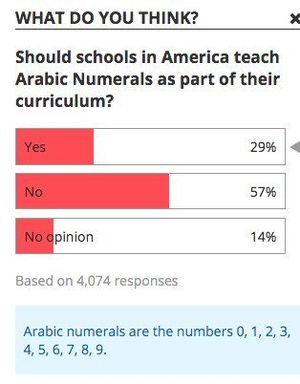Nachricht für neue Nutzer.
Nachricht für engagierte Nutzer.
Crusades: Unterschied zwischen den Versionen
Keine Bearbeitungszusammenfassung Markierung: 2017-Quelltext-Bearbeitung |
Keine Bearbeitungszusammenfassung Markierung: 2017-Quelltext-Bearbeitung |
||
| (19 dazwischenliegende Versionen desselben Benutzers werden nicht angezeigt) | |||
| Zeile 1: | Zeile 1: | ||
[[Datei:Mansur1911.jpg|mini|Page out of ''Tashrīḥi Manṣūri'', about 1450<br>visible are arteries and nerves]] | |||
Even if the '''"dark"'''' Middle Ages in Christian Europe was not as backward as often claimed, the high culture of Islamic countries was amazing. | |||
* writings, knowledge from ancient times | |||
* trade with Africa, India, China | |||
* promotion of science and art | |||
* tolerance towards "book believers" | |||
provided for a rich culture, which was often adopted by the crusaders. | |||
{{#ev:youtube|koVo8ZgtR94}} | |||
__NOTOC__ | |||
== Cultural Exchange == | |||
The crusaders encountered many things in the Orient that they did not yet know. Often they did not invent their own words for new things, but adopted the already existing Arabic word. Many terms show the influence of Arabic on the English language: | |||
<div class="zuordnungs-quiz" lang="en"> | |||
{| | |||
| ORANGE<br>برتقال ||[[datei:Orange Sliced White Background.jpg|100px]] || fruit, originally from South and East Asia, <br>known in Sanskrit as naranga, which became the Arabic naranj. | |||
|- | |||
| ALCOHOL<br>(الكُحُـــــــــول.) || [[Datei:Glencairn Glass-pjt.jpg|50px]] || an extraction process from a mineral, <br>European chemists began to refer to anything involving extraction/distillation as alcohol. | |||
|- | |||
| ALCHEMY & CHEMISTRY<br> (الكيميـــــــــاء.) || [[datei:Chemistrylogo.svg|100px]] || ''put together'' | |||
|- | |||
| ALGEBRA<br> (الجبــر) || [[datei:Algebra2 sistnlin fig002 prbl.svg|100px]] || a mathematical discipline | |||
|- | |||
| CANDY<br> (from قندي)|| [[File:Ambigram Candy icon - pink animated.gif|100px]] || “hard sweets made by boiling cane sugar” | |||
|- | |||
|COFFEE<br> (قهوة) || [[datei:Roasted coffee beans.jpg|100px]] || for long snubbed by Europeans as the “wine of the infidels”—that is, <br>many centuries before the age of Starbucks and instant coffee! | |||
|} | |||
</div> | |||
'''part 2''' | |||
<div class="zuordnungs-quiz" lang="en"> | |||
{| | |||
| SOFA<br> (الصُفــــــــة)||[[datei:Sofa Clip Art.jpg|100px]] || cushioned item of furniture<br> for seating multiple people || raised, carpeted platform<br> on which people sat. | |||
|- | |||
| SUGAR <br>(سكر) || [[Datei:Sugar cubes.jpg|100px]] || Sanskrit (śarkarā),<br>meaning "ground or candied sugar" | |||
|- | |||
| CIPHER<br> (صِفـــــــــــــــــــــــــــر) || [[datei:"0" - geograph.org.uk - 2112765.jpg|100px]] || Arabic word for zero صفر (sifr) || not easily understood, <br>so used for encrypted code | |||
|- | |||
| ELIXIR<br> (الإكسيــــــــــــــر) || [[datei:Three early medicine bottles.jpg|100px]] || like a syrup | |||
|- | |||
| SODA<br> (صـــــــــودا.)|| [[datei:Gin and Tonic with ingredients.jpg|100px]] || chemical compounds containing sodium | |||
|- | |||
| ARTICHOKE || [[datei:Adolphe Millot artichaut de laon.jpg|75px]] || variety of a species of thistle cultivated as food. | |||
|} | |||
</div> | |||
'''part 3''' | |||
<div class="zuordnungs-quiz" lang="en"> | |||
{| | |||
| ADMIRAL<br> (أميــــــــر الرحلة)|| [[File:Rear Admiral Suraj Berry.jpg|100px]] || commander of the fleet | |||
|- | |||
|ARSENAL<br> ( دار الصناعــــــــــــــــة ) || [[datei:View of the entrance to the Arsenal by Canaletto, 1732.jpg|100px]] || manufacturing house<br>where weapons for the navy are made | |||
|- | |||
| MAGAZINE<br>( مجلة)|| [[datei:South African Naval Museum Simon's Town.jpg|100px]] || store house | |||
|- | |||
| ASSASSIN<br> (حشَّــــــــــــــاشين”)|| [[datei:Assassination.png|100px]] ||hitman, murderer | |||
|- | |||
| COTTON<br> (قُطْـــــــــن)|| [[datei:Upland cotton pulled out of a boll before harvest. (24490308693).jpg|100px]] || soft, fluffy staple fiber<br>used for textiles | |||
|- | |||
| MATTRESS<br> (مطـــــــــــــــــــرح.)|| [[datei:Pillowtop-mattress.jpg|75px]] || large, usually rectangular pad where you can lie and sleep | |||
|} | |||
</div> | |||
=== Arabic, Latin or Greek? === | |||
Some words originated in Greek, were translated into Arabic and found their way into the English language: | |||
'''Sort the loan words after their original language:''' | |||
<div class="zuordnungs-quiz" lang="en"> | |||
{| | |||
| '''Arabic''' || guitar || alcohol || cipher|| algebra || safran || tariff || tambourine || artichoke || safari | |||
|- | |||
| '''Greek''' || philosophy || tragedy|| Maths || democracy ||monologue || | |||
|- | |||
| '''Latin''' || cherry || wine || process ||jurist || peach ||chamber || street | |||
|} | |||
</div> | |||
'''Sort the following Arabic loan words after topics:''' | |||
<div class="zuordnungs-quiz" lang="en"> | |||
{| | |||
| '''Spice / Fruit <br>Beverages''' || coffee || alcohol || lemonade || safran || muskat || orange || sugar || peach | |||
|- | |||
| '''Textiles''' || cotton || damast|| jacket || German: ''Kittel'' || German: ''Mütze'' | |||
|- | |||
| '''Furniture''' || mattress || sofa || mosaik || diwan || baldachin | |||
|- | |||
| '''Music''' || lute<br>(German: Laute) || guitar|| tambourine || fanfare trumpet | |||
|- | |||
| '''Science''' || cipher || algebra || elixir || azure || algorithm || risk | |||
|} | |||
</div> | |||
== counting and calculating == | |||
The merchant and mathematician Leonardo Fibonacci from Pisa triggered a mathematical revolution with his book "Liber abaci". He noticed: | |||
{{Zitat| | |||
The nine numbers of the Indians are: 9 8 7 6 5 4 3 2 I.<br> | |||
With them and with the sign 0, which is called "sifr" in Arabic, | |||
you can write every number you want.|}} | |||
{{Aufgabe-en|# Where do the "Arabic" numbers really come from? | |||
# How do you pronounce '''0''' in English? Do you know which original language it's from? | |||
# Compare the addition tasks below with each other and then fill in the missing words in the following text.}} | |||
<div class="grid"> | |||
<div class="width-1-3"> | |||
'''Roman Numerals''' | |||
<p style="text-align:right;">MM</p> | |||
<p style="text-align:right;">+ XVIII</p> | |||
<p style="text-align:right;">_____________________</p> | |||
<p style="text-align:right;">MMXVIII</p> | |||
<p style="text-align:right;">=================</p> | |||
</div> | |||
<div class="width-1-3"> | |||
'''Arabic Numerals''' | |||
<p style="text-align:right;">2000</p> | |||
<p style="text-align:right;">+ 18</p> | |||
<p style="text-align:right;">_____________________</p> | |||
<p style="text-align:right;">2018</p> | |||
<p style="text-align:right;">=================</p> | |||
</div> <div class="width-1-3"></div> | |||
</div> | |||
<div class="lueckentext-quiz" lang="en"> | |||
The numerical values are ''the same'' in both tasks. There are two advantages to written arithmetic with ''Arabic'' numerals: | |||
With the ''Roman'' numerals, there is no numeral sign for the numerical value ''zero''. | |||
In the spoken form, Roman numerals, like Arabic numerals, are structured according to the ''ten system''. In the written form, however, the Roman numerals lack the division into "ones", "tens", "hundreds", "twos" and "threes". hundreds'', etc. | |||
</div> | |||
'''fun stuff''' | |||
I can't believe this: | |||
[[Datei:Arabic numerals-poll.jpg|thumb|left|Umfrage, ob man Arabische Zahlen in Schulen lehren sollte.|link=https://twitter.com/suhaibkhan/status/1127697610741911553]] | |||
{{clear}} | |||
== Vocabulary == | |||
crusader = Kreuzzügler, Kreuzritter | crusader = Kreuzzügler, Kreuzritter | ||
Aktuelle Version vom 21. Januar 2023, 05:24 Uhr
Even if the "dark"' Middle Ages in Christian Europe was not as backward as often claimed, the high culture of Islamic countries was amazing.
- writings, knowledge from ancient times
- trade with Africa, India, China
- promotion of science and art
- tolerance towards "book believers"
provided for a rich culture, which was often adopted by the crusaders.
Cultural Exchange
The crusaders encountered many things in the Orient that they did not yet know. Often they did not invent their own words for new things, but adopted the already existing Arabic word. Many terms show the influence of Arabic on the English language:
ALCOHOL
(الكُحُـــــــــول.)
ALGEBRA
(الجبــر)
ORANGE
برتقال
ALCHEMY & CHEMISTRY
(الكيميـــــــــاء.)
CANDY
(from قندي)
COFFEE
(قهوة)




![]() fruit, originally from South and East Asia,
fruit, originally from South and East Asia,
known in Sanskrit as naranga, which became the Arabic naranj.“hard sweets made by boiling cane sugar”put togetherfor long snubbed by Europeans as the “wine of the infidels”—that is,
many centuries before the age of Starbucks and instant coffee!an extraction process from a mineral,
European chemists began to refer to anything involving extraction/distillation as alcohol. a mathematical discipline
a mathematical discipline
part 2
ARTICHOKE
SUGAR
(سكر)
ELIXIR
(الإكسيــــــــــــــر)
SOFA
(الصُفــــــــة)
SODA
(صـــــــــودا.)
CIPHER
(صِفـــــــــــــــــــــــــــر)
like a syrupcushioned item of furniture
for seating multiple people not easily understood,
not easily understood,
so used for encrypted code
 variety of a species of thistle cultivated as food.raised, carpeted platform
variety of a species of thistle cultivated as food.raised, carpeted platform
on which people sat.chemical compounds containing sodium

 Arabic word for zero صفر (sifr)Sanskrit (śarkarā),
Arabic word for zero صفر (sifr)Sanskrit (śarkarā),
meaning "ground or candied sugar"
part 3
MAGAZINE
( مجلة)
MATTRESS
(مطـــــــــــــــــــرح.)
ADMIRAL
(أميــــــــر الرحلة)
COTTON
(قُطْـــــــــن)
ASSASSIN
(حشَّــــــــــــــاشين”)
ARSENAL
( دار الصناعــــــــــــــــة )
store house commander of the fleetlarge, usually rectangular pad where you can lie and sleep
commander of the fleetlarge, usually rectangular pad where you can lie and sleep



 soft, fluffy staple fiber
soft, fluffy staple fiber
used for textileshitman, murderermanufacturing house
where weapons for the navy are made
Arabic, Latin or Greek?
Some words originated in Greek, were translated into Arabic and found their way into the English language:
Sort the loan words after their original language:
Latin
Greek
Arabic
artichokepeachsafranMathsdemocracyprocesstambourinetragedyguitarstreetchambertariffwinejuristalcoholcipherphilosophycherrymonologuealgebrasafari
Sort the following Arabic loan words after topics:
Furniture
Textiles
Music
Science
Spice / Fruit
Beverages
jacketrisktambourinemuskatsafranmosaiklute
(German: Laute)elixirorangediwancipherpeachmattressalgorithmGerman: KittelguitarsugarGerman: Mützelemonadecottonsofabaldachinalgebradamastfanfare trumpetalcoholcoffeeazure
counting and calculating
The merchant and mathematician Leonardo Fibonacci from Pisa triggered a mathematical revolution with his book "Liber abaci". He noticed:
The nine numbers of the Indians are: 9 8 7 6 5 4 3 2 I.
With them and with the sign 0, which is called "sifr" in Arabic,you can write every number you want.
- Where do the "Arabic" numbers really come from?
- How do you pronounce 0 in English? Do you know which original language it's from?
- Compare the addition tasks below with each other and then fill in the missing words in the following text.
Roman Numerals
MM
+ XVIII
_____________________
MMXVIII
=================
Arabic Numerals
2000
+ 18
_____________________
2018
=================
The numerical values are in both tasks. There are two advantages to written arithmetic with numerals:
With the numerals, there is no numeral sign for the numerical value .
In the spoken form, Roman numerals, like Arabic numerals, are structured according to the . In the written form, however, the Roman numerals lack the division into "ones", "tens", "hundreds", "twos" and "threes". hundreds
Arabicten system, etc.zeroRomanthe same
fun stuff
I can't believe this:
Vocabulary
crusader = Kreuzzügler, Kreuzritter
crusade = Kreuzzug
crusade = religious war to free the Holy Land (= Jerusalem, Palestine)
Why - because pilgrims wanted to visit the place where Jesus had lived.






